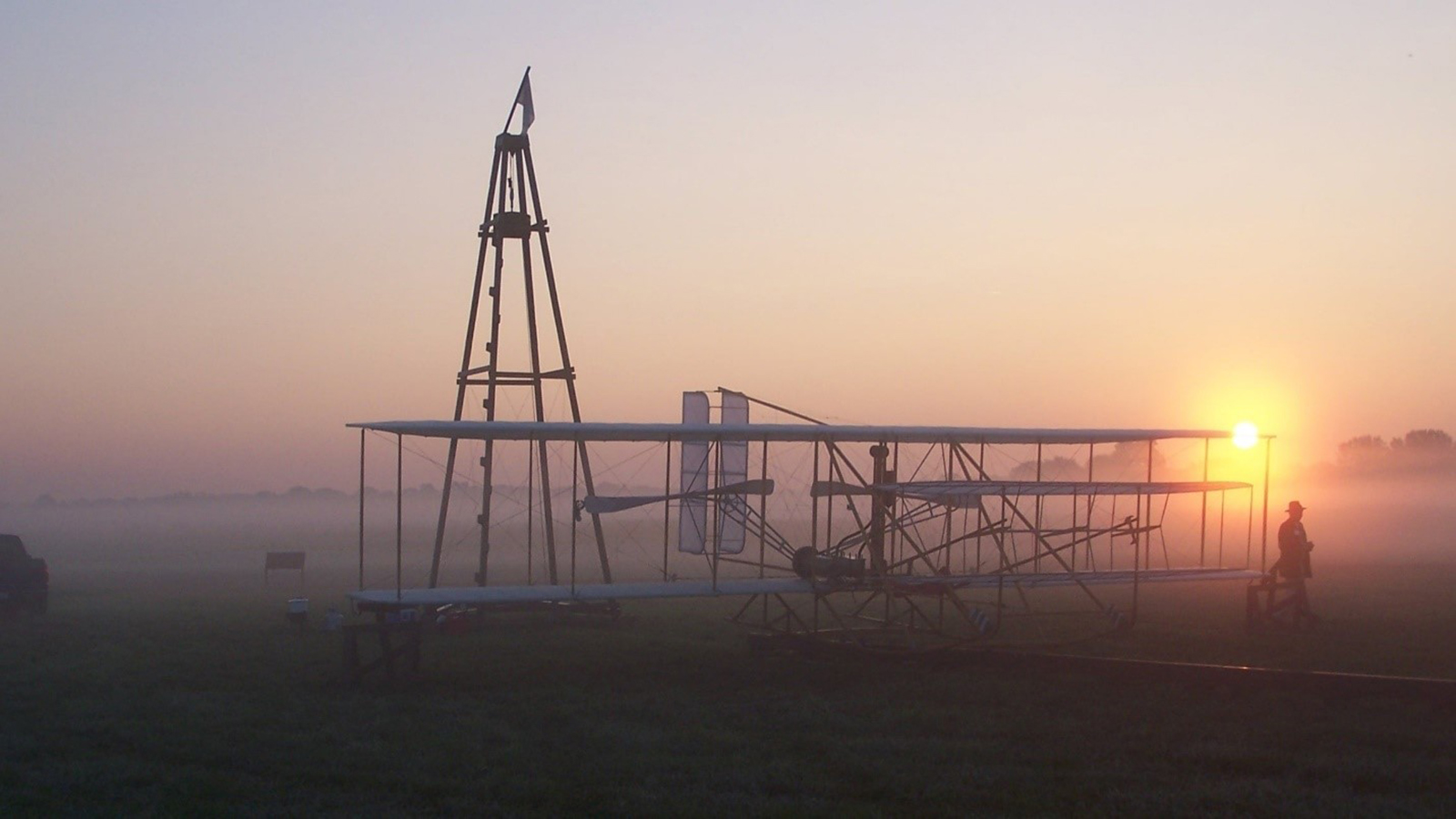
Photo: Huffman Prairie, National Aviation Heritage Area, courtesy of the National Aviation Heritage Alliance.
Across the United States, there is a vast network of National Heritage Areas, each one designated by Congress as places where natural, cultural and historic resources combine to form a cohesive, nationally important landscape. The Rivers of Steel National Heritage Area is just one of 55 National Heritage Areas, each one focusing on a special that’s defined America. Today, we’re transporting you about 260 miles west in the comfort of your own home to learn more about the National Aviation Heritage Area, which encompasses eight counties and more than 15 aviation sites radiating out from Dayton, Ohio—the birthplace of flight. Learn more about the experiences that the region offers at VisitNAHA.com!

Celebrating the Wright Brothers on National Aviation Day
By Elizabeth Connor, APR. | Director of Communications, National Aviation Heritage Area
Today, on National Aviation Day, we take a moment to celebrate the national success of Wilbur and Orville Wright. Their invention in Dayton, OH connected the world in real life before the internet shifted our perception of time and space. Started in 1939 by President Franklin Delano Roosevelt, Orville Wright’s birthday (National Aviation Day) is now annually a time to honor connections, share resources, and discover new adventures.
We invite you to read and enjoy this story, shared with us by our friends and neighbors in southwest Ohio at the National Aviation Heritage Area.
During the late 1800s, the Carnegie Steel Company managed the steel mills in and around Pittsburgh, PA including the Carrie Blast Furnace. For a massive sale price of $492 million, Andrew Carnegie sold his company to J.P. Morgan in 1901. The new conglomerate: United States Steel Corporation.
But that wasn’t the only business investment J.P. Morgan was making at the turn of the century. On February 17, 1901, W.H. Ogan of Boston represented the financial interests of Morgan at the first run from Springfield, OH to Urbana, OH on the Dayton, Springfield and Urbana interurban rail line(DS&U).[i]
While the rise of the automobile signaled doom for the interurbans, in the early 20th century these electric streetcar lines were a primary means of transporting passengers between cities and provided new access to rural farms and small towns. Two brothers became some of their best customers.
Wilbur and Orville Wright took the DS&U daily from their west Dayton shop to the farm of Torrence Huffman about eight miles to the east. The DS&U had a small shelter called Simms Station there and the 100-acre farm was perfect for an impromptu airfield, as long as you didn’t mind a few cows and horses grazing on the runway.
Beginning first with the Wright Flyer II on May 26, 1904, the brothers flew 25 feet across Huffman Prairie. Their father had come to watch the spectacle and caught the 3:30 DS&U back to Dayton after his sons’ flight. It took less than 30 minutes to get back home.[ii] Six years after that first flight, almost to the day, the Wright brothers took their father up into the air for the first time. As we all are, the brothers were nervous about their father’s reaction. But his words were only, “Higher, Orville. Higher.”[iii]
As word of the brothers’ success spread, tourists and supporters frequently traveled the DS&U to Simms Station to watch history unfold. At Huffman Prairie in 1904 and 1905, through a series of unique experiments, the Wright brothers mastered the principles of controlled, powered flight, and developed the world’s first practical airplane.
In 1904, the brothers made 105 flights, totaling 49 minutes in the air with their 1904 Wright Flyer II. With this flying machine, they made the first turn and the first circle in the air. They also employed a starting derrick for the first time and Wilbur set a new distance record.
When the brothers returned to the Huffman Prairie for the 1905 flying season, they brought along an improved machine, the 1905 Wright Flyer III. This flying machine, which evolved throughout 1905, could bank, turn circles, and make figure-eights. On October 5, 1905, Wilbur piloted the plane for a world record of over 24 miles in 39 minutes. About two weeks later, the brothers ended their experiments for 1905 feeling that they now had a practical airplane that they could market. In the 1905 flying season, the brothers stayed aloft for 262 minutes in just 50 flights.
The Wright brothers returned to Huffman Prairie Flying Field in 1910. The field was used by their new business, The Wright Company, as a testing ground, flying school, and home to their exhibition team. The Wright Company ceased use of the flying field in 1916.
You can no longer travel on the interurban today, but you can visit Huffman Prairie. Located on the grounds of Wright-Patterson Air Force Base, the area includes the Huffman Prairie Flying Field Interpretive Center, the Huffman Prairie Flying Field, and the Wright Memorial.
At the Huffman Prairie Flying Field Interpretive Center, you’ll see exhibits that focus on the achievements of the Wright brothers at Huffman Prairie Flying Field, and the story of their continuing legacy as embodied by Wright-Patterson Air Force Base. Dedicated in 2002, the interpretive center is owned by the U.S. Air Force and operated by the National Park Service.
________________________________________
[i] Keenan, J. (1992). Chapter III, 1901 – The Year of Promise. In The uncertain trolley: A history of the Dayton, Springfield and Urbana Electric Railway (p. 33). Fletcher, OH: Cam-Tech Pub.
[ii] Ibid, (p. 62).
[iii] Crouch, T. D. (2003). The Bishop’s boys: A life of Wilbur and Orville Wright (p. 12). New York, NY: W.W. Norton.
________________________________________
Join the National Aviation Day Conversation
Want to keep learning about everything there is to celebrate on National Aviation Day? The National Aviation Heritage Area is facilitating a #NationalAviationDayChat all day on Twitter. Follow their high-flying Twitter handle, @visit_NAHA to join the conversation and enjoy the connections that aviation—and the internet—provides!
________________________________________
About Elizabeth Connor
Elizabeth Connor is the Director of Communications at the National Aviation Heritage Area in Ohio. She is a graduate of Carnegie Mellon University and an avid Pens fan. Elizabeth has worked in tourism throughout the globe since 2008 and was named the 2019 Emerging Leader by the Ohio Travel Association. The National Aviation Heritage Area is the recognized center of aviation heritage tourism and aerospace innovation, sustaining the legacy of the Wright brothers.







